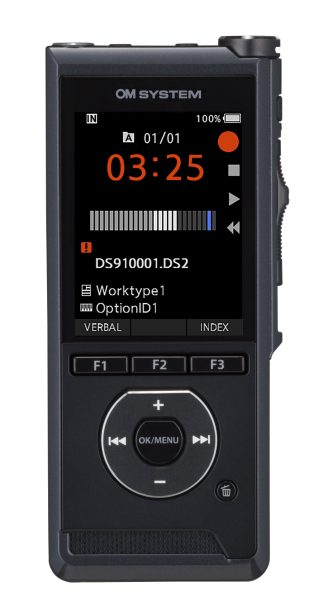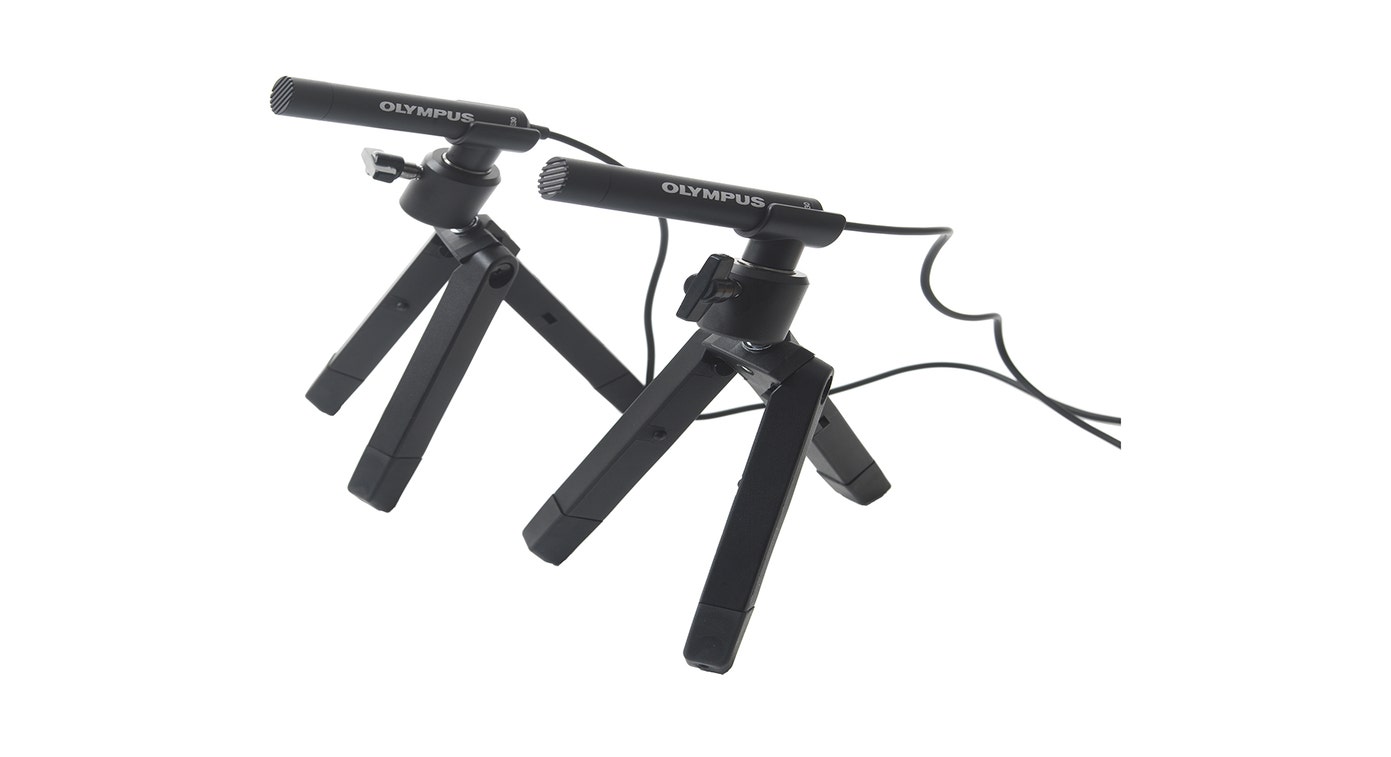How recording quality affects transcription accuracy
An accurate transcription starts with a high-quality audio recording. This is true whether your transcriptions are created with speech recognition software, a person using a transcription kit, or a combination of both. That’s because the clearer the audio, the more easily every word will be understood and transcribed correctly. So while professional-grade audio recording devices can cost more than consumer-grade recorders, the added investment improves transcription accuracy, ultimately saving time and money.
Dual Microphones
The most important difference between pro-grade and consumer recorders is in their ability to clearly capture spoken words. To do this, professional recorders contain larger and much higher quality microphones and sophisticated technology. For example, the Olympus DS-9500 and DS-9000 feature intelligent dual microphones that control the directionality of recording, keeping focus on the person dictating. Capturing sound with dual microphone technology allows the system to actively monitor the phase difference and adjust depending on the recording settings, allowing for the highest quality replay.
 Vocal Range Filtering
Vocal Range Filtering
In addition, high-quality microphones are able to reduce the sound wave range outside of the human voice resulting in excellent background noise reduction. For example, our recorders use a triple-layer studio-grade pop filter that blocks breath and wind vibrations. The devices are also able to suppress ambient noise in offices, hospitals, cars, airports and other noisy environments, resulting in recordings that are easier to understand and transcribe, again ensuring accuracy.
Sample Rates and Formats
Note that for some types of recordings, such as high-end music production, there are other factors that contribute to audio fidelity, such as “sampling” and “bit depth” rates. The sampling rate is the number of times per second audio is recorded, and the bit depth is a measure of the bits of information in each sample. For dictation purposes, a high-quality voice recorder will have a bit depth of 16-24 bits per sample. (By comparison, most smartphones record audio at only 8 bits per sample.) Although recorders designed for music capture will have much higher rates, the size of the audio file will also increase, making ultra-high fidelity recording impractical for dictation and transcription purposes where files need to be efficiently saved, stored and transferred.
Finally, pro recorders offer the option of saving files in a range of formats, including DSS and DSS Pro, which allow for extremely small file sizes that are well-suited to lengthy recordings. Higher quality MP3 and PCM (raw) formats also are available.
So, why use professional grade recording devices for your dictation and transcription? Because, today’s professional grade recording devices are specifically designed to balance your need for extremely high-quality recordings, resulting in faster, more accurate transcriptions, while maintaining a small file size for easy storage and transfer.













 Vocal Range Filtering
Vocal Range Filtering